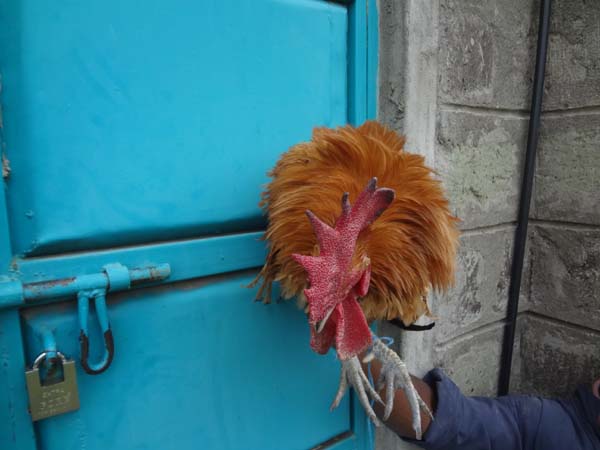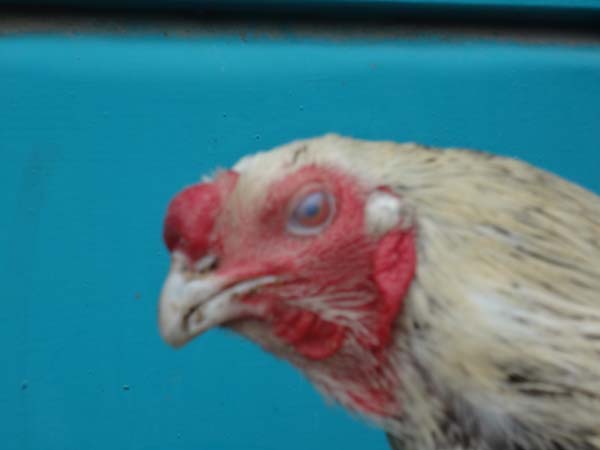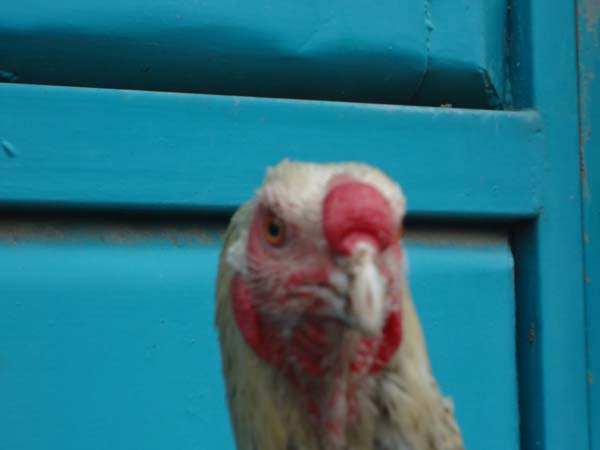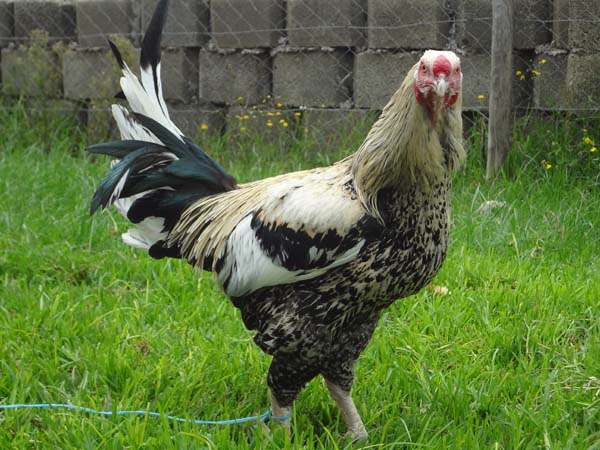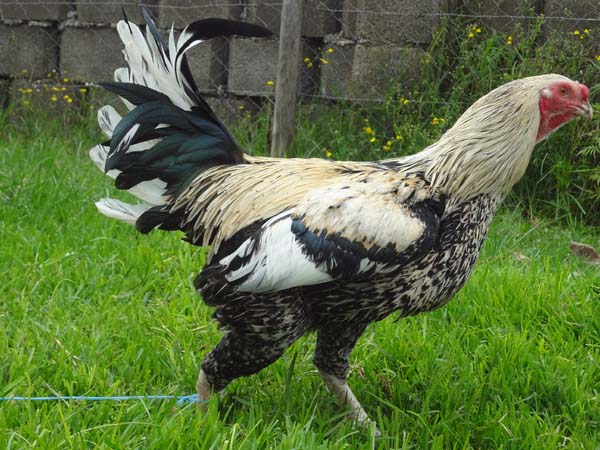Technical Notes
Background
Crossbreeding has been adopted to improve indigenous chickens (IC) in Malawi, where Black Australorp (BA) was introduced since 1960. The Government implemented three hatcheries, one in each region, to facilitate hatching and distribution of six weeks old BA to households in villages. The theory of crossing is viable, to improve meat and egg from BA; and adaptation to scavenging from IC through combined effects in a crossbred. However, no tangible results and impact has been noted. Notable problem is lack of capacity to implement systematic mating at village level. Several crossings take place beyond first generation, leading to mating among related, and subsequent inbreeding hence reversing effects of crossing. On the other hand, IC are at risk through dilution. A viable option is to develop a protocol that will ensure
- Improved meat and egg performance
- Sustained adaptation on slightly modified scavenging environments
- Ensuring conservation of IC ecotypes
Thrust
- Develop high producing IC to survive improved scavenging conditions
- India has produced a Kuroiler chicken ~ www.keggfarms.com
- We want to go ‘Beyond hybrids to composites
Protocol
Collection of ecotypes from different regions of Malawi, currently
- From Mzimba, Lilongwe and Karonga
- Within ecotypes, different phenotypes
- Target is 10 - 11 phenotype within ecotype
- 30 % males (cocks)
- All birds tagged at buying point, and recorded
Construction of IC housing structures at Bunda
- Housing
- Incubator
- Recording facilities
Establishing IC foundation stock at Bunda
Studies on the IC
- Comparison between ecotypes
- Comparison between phenotypes within ecotypes
Establish a breeding protocol
- Development of pure phenotypes
- Through mating of same phenotypes
- And selecting off-shoots out
- Then characterizing their growth, egg and adaptation traits
- Development of crosses
- Through mating of different phenotypes within IC
- And mating between IC and existing exotic strains of Black Australorp, Broiler and Layer strains
- Then characterizing their growth, egg and adaptation traits
Develop IC composite
- Development of composite IC
- Through crossing and selection practices
- Then characterizing their growth, egg and adaptation traits
- Selection will take place along the breeding processes
- Inferior performing birds will be taken off breeding
Nutrition Tests
- To establish nutrient requirements of developed breeds
- Different rations and regimes will be developed and tried on IC and their crosses
Distribution and testing of Improved IC
- Will start when pure phenotypes are produced
- Distribution will be through
- Eggs
- Day old chicks
- Chicks after brooding age recommended from student study
- For both pure IC and crosses
Facilitate crossbreeding using the following protocol
Why crossbreed?
To improve growth and egg performance of local chickens by introducing improved meat and eggs characteristics from Black Australorp (Mikolongwe); while ensuring their adaptation to free-ranging (scavenging environment)
What benefit do you get from each breed?
From Local breed: Adaptation to free-ranging, harsh environment of feed scarcity, diseases and hot seasons
From Black Australorp (BA) breed: Improved egg and meat traits
Where do you see this improved performance and adaptation?
In the crossbred chickens between Black Australorp and Local chicken
What to do to achieve the desired goals of improved eggs, meat and adaptation?
When Black Australorp chickens are introduced to households, the following will take place
1.Black Australorp cock should mate with local chicken hens
a.The hatches are crosses with 50 % BA, 50 % Local, both male and females
2.BA cock mates with BA hen
a.The hatched chicks are pure BA, both males and females
3.BA hens lay eggs but fail to brood, so local hens are used to hatch BA eggs
4.You can remove some eggs of local chicken and substitute with BA eggs
What happens is that on a household, both pure and crosses exist.
After first crossing, there is need to ensure further crossing is done carefully to upgrade crosses without landing into problems of inbreeding.
To ensure effective subsequent crossings, take note and hid the following
Males
1.All male crosses should not be allowed to breed at home or at a neighbor or at a friend. These should be consumed when they reach maturity stage
a.Using crossbred males will downgrade instead of upgrading local chickens and crosses
2.Males born from BA cock and BA hen are pure BAs and can be used for breeding. Please avoid using these at home but can help other households in other villages.
a.Using BA males at home will mate their sister BA and crosses, hence inbreeding
3.The father BA cock should be exchanged with another village immediately it’s daughters reach sexual maturity
a.This will prevent a BA cock from mating its daughters, hence serious inbreeding
4.The exchanged male cock can be used to mate both mother and daughter BA, crosses and local hens
a.Mating BA hens will hatch BA males and females
b.Mating cross hens will hatch crosses of 75 % BA, 25 % local
c.Mating local hens will hatch crosses of 50 % BA, 50 % local
5.Continue the above steps of cock exchange
Females
1.All females will be used for further breeding at home
2.BA hens should continue mating with BA cock
3.BA cross hens should mate with BA cock but not their father or their brother. This is where a cock should be exchanged from another village
4.Local hens should continue mating with BA cock, whether the one at home or the one exchanged but not cross cocks
Maintenance of local chickens
Local hens will still be needed at homes to be used to hatch eggs from BA hens. So, effort should be made to ensure pure local chicks are produced in homesteads. Make sure that
1.Some local cocks are maintained at communities
2.Facilitate mating of local cock to some local hens
3.But minimize chances of local cock mating BA hens and crosses
These notes are guidelines to follow if we want to see improved local chickens in our villages resulting from crossing. Village chiefs, leaders, paravets and communities should discuss strategies to ensure guidelines are working.
Avoid inbreeding: Inbreeding is mating of cocks and hens that are related, either father to daughter, sister to brother, mother to son, etc.
Problems of inbreeding: It lowers performance of animals, just like reversing impact of crossbreeding
A thing to avoid: Inbreeding should be avoided at all times, by following the above steps
For further enquiries and clarifications, please contact Assistant Veterinary Officers, District Animal Health and Livestock Development Officers, or Bunda College of Agriculture.
Contact Details:
Dr. Timothy Gondwe
Associate Professor of Animal Breeding
Email: This email address is being protected from spambots. You need JavaScript enabled to view it. or This email address is being protected from spambots. You need JavaScript enabled to view it. or This email address is being protected from spambots. You need JavaScript enabled to view it.
Phone: +265 888386847






